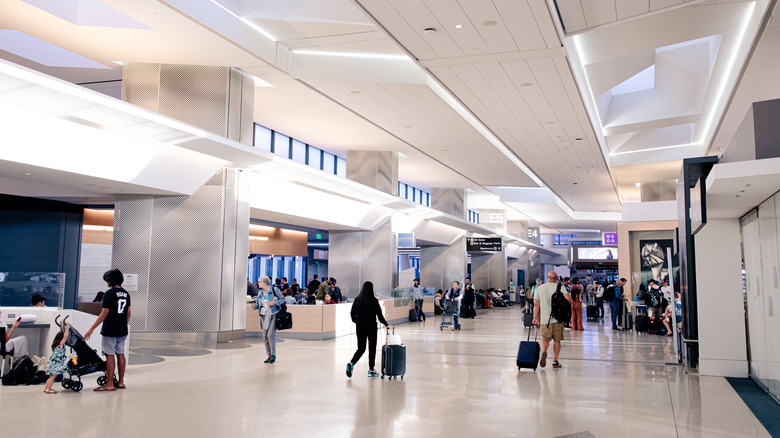Why Airport Food Is So Expensive Compared To Everyday Options
We've all experienced it: you're craving a snack after standing in that long security line, only to realize that everything on the menu feels far more expensive than your local eatery. No, you're not wrong; airport food actually does cost a lot more. And while you can take it with you on the plane, you might run into a few problems, so it's best to eat it all before you go to avoid wasting money. In short, these high prices are mostly due to rent prices, expensive delivery and storage fees, and keeping employees happy.
Employees are the foundation of any good business. But airport restaurants operate on extensive schedules, with hours expanding beyond when most usual eateries would be open. This leads to quick burnout, and employee retention at airport restaurants is pretty low. Airports in general have low retention rates for workers in many sectors, with places like New York City airports even implementing wage increases in an attempt to increase retention across the board. Of course, that often leads to higher prices at concession stands and food spots, passing the cost on to the consumer. In early 2025, one user even posted a photo to Reddit showing a 3% fee added to their food bill labeled "Employee Benefit & Retention" at New Jersey's Newark Airport. If you choose to bring that pricey food on the plane, keep in mind there are certain foods flight attendants wish you wouldn't pack.
Airport rent is extremely high
Airports are prime real estate for restaurants; it's common for people to grab a bite to eat once they find their gate. Plus, only so many restaurants can fit in a terminal space, so the demand drives up rent prices. In 2023, TR Business News revealed that just 175-square-feet of concession space at New York City's JFK Airport would cost a minimum of $2,708 per month. A 50-seat restaurant, which is on the smaller side, needs about 1,000 square feet of space. Based on that price and square footage, a 1,000-square-foot space at JFK would run about $15,000 per month.
At JFK, the total rent cost for that 175-square-foot space is either $2,708 or 13% of sales — the true price is whichever number is greater, so if your restaurant space is highly successful, you can expect to pay even more than the base rent. To keep rental costs manageable for restaurants, prices for consumers increase.
Delivery and storage fees cost restaurants plenty of money
There are fees associated with everything required to run an airport restaurant. Even parking fees for employees often fall onto the employer, and airport parking isn't cheap. But delivery and storage fees add up, too.
Delivering to airports isn't easy. There are parking restrictions, tight spaces, and other hassles that delivery trucks need to navigate — not to mention airports are often out of the way of other delivery spots on the truck's route. As a result, suppliers charge even more to deliver to airports, and restaurants have to cover that fee. How? You guessed it: the price of your food and drink. Plus, storage space isn't widely available at airports, which means the storage space prices increase due to increased demand. If restaurants choose to rent storage space off-site, they still have to pay to have the products and equipment transferred to the restaurant space when it's needed, so regardless, your meal will be expensive. If you want to avoid the high cost, you can try bringing some fast food through airport security.


